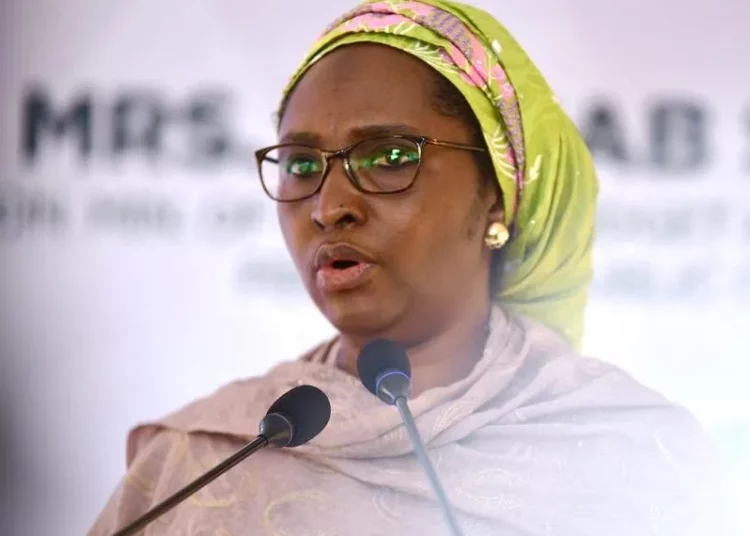The Debt Management Office (DMO) last week released the debt stock for the country, putting Nigeria’s total borrowings as at June 30, 2022 at N42.8 trillion, a 20.8 year on year and 3.0 per cent quarter on quarter increase.
The debt level which is the highest on the country’s record has continued to be a trending topic of discourse. Many analysts have continued to raise the banner of impending doom the country may be thrown into in the face of the stockpiled debt and lack of political will to take the hard decisions before the elections.
Although the federal government had previously targeted a reduction in domestic borrowing, the new record-high debt profile was driven by the accumulation of domestic debt as the DMO has turned to the domestic debt market to plug the gap in FG’s deficit financing.
As a result, the share of external debt declined to 38.8 per cent in the second quarter of the year compared to 39.9 per cent in the first quarter, while the domestic debt’s share rose by an equal magnitude to 61.2 per cent from 60.1 per cent.
With the government still planning to raise more debts to finance its obligations, analyst say the path being towed by the country is unsustainable as the retained revenue is no longer enough to service the debt obligations.
The minister of Finance, Budget and National Planning, Mrs. Zainab Ahmed had sounded the alarm bells when she revealed that the country’s debt service cost in the first four months of the year was N1.94 trillion, N310 billion higher than the actual revenue received during the period.
According to her, federal government’s retained revenue for the period was only N1.63 trillion, 49 per cent of the pro rata target of N3.32 trillion. This means that the government had spent 118 per cent of its revenue on servicing its debt.
Analysts at Afrinvest West Africa in an emailed note commenting on the debt status of the country said: “our assessment of debt sustainability metrics suggests that debt-to-GDP ratio rose to 23.7 per cent in Q2:2022 which is below both DMO’s, 40 per cent and IMF’s 55 per cent of GDP) thresholds.
“Given that tax revenue trends well below five per cent of GDP, we focused on other key sustainability metrics. The debt-to-revenue ratio rose further to 11.9x in Q2:2022 from 8.9x in Q1:2022, indicating the colossal size of Nigeria’s debt relative to FG’s annual income. Based on available data on debt service and retained FG revenue in Q1:2022, annualized debt service-to-revenue for 2022 sits at 138 per cent against 96 per cent in 2021 which translates to the deployment of all FG’s revenue and part use of new debt to offset interest payment on borrowings.
“In our view, the current trajectory of fiscal policy is unsustainable, especially with the inefficient structure of the budget which prioritizes recurrent spending over capital expenditure due to the high debt burden and cost of governance. In addition, the poor revenue generating capacity of the FG has encouraged the use of debt stock to plug fiscal deficits.”
The amount spent on servicing external borrowing has been on the rise since 2015, moving from $331.059 million which was expended in 2015 to $2.019 billion in 2021. In the first half of this year, the government has already spent $1.291 trillion to service its external borrowings.”
Also commenting on the status of Nigeria’s debt, analysts at Cowry Assets Management notes that, “Nigeria’s inability to curtail its undesirable build-up of public debts and fiscal sustainability risks keeps it hanging on a fiscal cliff as the weakening local currency against the greenback and low or no earnings from crude oil rally occasioned by the Northern Europe impasse, continues to hamper its ability to service its debts.
“This comes in the face of fund paucity; and, for a truth, no respite for FG’s debt levels as the trend of borrowing spree continues in the move to part-finance over N5 trillion deficit in the 2022 Appropriation Act as well as a new round of borrowings by State Governments and the FCT while we head into an electioneering year.
Stating that the government is in need of a revamped fiscal rule that would not endanger its public finances sustainability, Cowry Assets analysts opine that “building greater fiscal buffers will help avoid debt crisis that could have some destabilizing effects on the overall sustainable growth of the economy.
“Meanwhile, a downside is the debt service-to-revenue ratio which unabatingly has remained high in the face of FG’s weak revenue generation power over the years. For sure, FG will continue the implementation of initiatives to drive revenue generation from both oil and non-oil sources respectively.
“However, it is imperative to state that blocking revenue-leakages, promoting effective reforms and frameworks that are growth-driven and then revamping weak institutions to aid the enhancement of these reforms, are sacrosanct to achieving effect and sustainable public debt management.”
Likewise, analysts at Afrinvest said: “to avert worsening the fiscal crisis, we recommend the implementation of prudent fiscal frameworks to curb wasteful expenditure while the FG stems the tide of large-scale oil theft and dwindling production due to poor oil infrastructure, vandalism, and subdued oil investment inflows.











